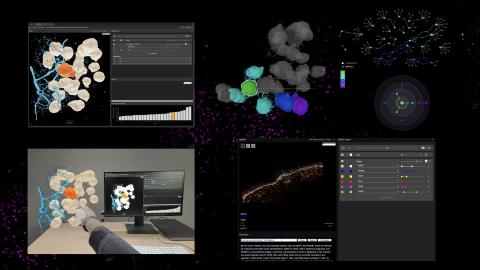Speaker: Dr. Eric Mörth (Harvard Medical School, Biomedical Informatics)
Advancements in 3D spatial biology have unlocked unprecedented opportunities to study biological systems across scales, from individual cells to functional tissue units. However, the complexity of these datasets demands innovative tools for exploration, interpretation, and hypothesis generation. Large Language Models (LLMs) offer transformative potential as interactive agents to guide and empower users—both laypersons and experts—in navigating these multidimensional datasets. By integrating LLMs with Extended Reality (XR) technologies, we can immerse users in 3D tissue maps, providing intuitive, spatially aware exploration of intricate biological structures. This approach allows users to observe, manipulate, and analyze 3D spatial data in an interactive and visually rich environment. Furthermore, combining 3D tissue maps with visual analytics can uncover patterns, network structures, and functional relationships within tissue architectures, enabling scalable analyses from the resolution of single cells to complex tissue-level networks. This synergy of LLMs, XR technologies, and advanced visual analytics redefines the boundaries of spatial biology, empowering users to bridge data complexity with actionable insights, fostering new discoveries in the life sciences.
